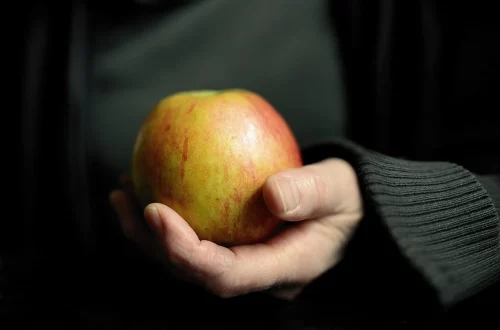
Understanding Black Beans Food Label: Key Nutritional Information
Black beans are a staple ingredient in many cuisines around the world, cherished not only for their rich flavor and versatility but also for their impressive nutritional profile. These small, dark legumes pack a punch when it comes to health benefits, making them an excellent addition to various dishes, from salads to soups and stews. As more people become conscious of their dietary choices, understanding the nutritional information on food labels has never been more crucial.
The food label provides valuable insights into the nutrient content, serving sizes, and ingredients of black beans, allowing individuals to make informed choices about their diets. Whether you are a health-conscious consumer, a culinary enthusiast, or someone exploring plant-based diets, knowing what to look for on food labels can enhance your understanding of how black beans fit into a balanced diet.
In this article, we will delve into the key nutritional aspects of black beans, helping you appreciate their role in a healthy lifestyle. By understanding these factors, you can incorporate black beans into your meals with confidence and enjoy the myriad benefits they offer.
Nutrition Facts of Black Beans
When examining the nutrition facts of black beans, it’s essential to consider their overall composition. A typical serving size of cooked black beans is about half a cup, which contains roughly 114 calories. This makes them a low-calorie food option, ideal for those looking to manage their weight without sacrificing nutrition.
Black beans are particularly rich in protein, offering approximately 7 grams per serving. This makes them an excellent plant-based protein source, especially for vegetarians and vegans. Protein is crucial for muscle repair and growth, as well as overall bodily functions, making black beans a valuable addition to any diet.
In addition to protein, black beans are an excellent source of dietary fiber, containing around 7.5 grams per serving. Fiber is essential for digestive health, as it aids in regular bowel movements and helps prevent constipation. Moreover, a high-fiber diet is linked to a reduced risk of chronic diseases such as heart disease and diabetes.
Black beans also provide a wealth of vitamins and minerals. They are particularly high in folate, which is vital for DNA synthesis and repair, making it especially important for pregnant women. Other nutrients found in black beans include iron, magnesium, and potassium, all of which contribute to various bodily functions such as oxygen transport, muscle contraction, and maintaining fluid balance.
Overall, the nutritional profile of black beans showcases their versatility and health-promoting properties, making them a valuable component of a balanced diet.
Understanding Serving Sizes and Portions
When it comes to enjoying black beans, understanding serving sizes and portions is crucial for maximizing their health benefits. The recommended serving size for cooked black beans is typically half a cup, but this can vary based on individual dietary needs and overall calorie intake.
For those looking to incorporate black beans into their meals, it’s essential to consider how they fit into the larger context of your diet. Pairing black beans with whole grains, such as brown rice or quinoa, can create a complete protein source, providing all essential amino acids necessary for the body. This combination not only enhances the nutritional value but also adds variety to your meals.
It’s also important to be mindful of added ingredients when consuming canned black beans. Many canned varieties contain added sodium, which can contribute to high blood pressure if consumed in excess. Opting for low-sodium versions or rinsing canned beans before use can help mitigate this concern.
Portion control is key, especially for those who are calorie-conscious. While black beans are nutrient-dense, consuming them in moderation alongside a variety of other foods can help maintain a balanced diet. For instance, a typical meal might include black beans, a serving of whole grains, and a side of vegetables, ensuring a well-rounded intake of nutrients.
Ultimately, understanding serving sizes and how to balance black beans with other foods will enable you to enjoy their health benefits while satisfying your culinary cravings.
Health Benefits of Including Black Beans in Your Diet
Incorporating black beans into your diet can offer numerous health benefits, thanks to their rich nutrient content and unique phytochemicals. One of the most significant advantages is their ability to support heart health. The fiber, potassium, and antioxidants found in black beans work together to reduce cholesterol levels and regulate blood pressure, contributing to overall cardiovascular wellness.
Moreover, black beans have a low glycemic index, which means they release glucose slowly into the bloodstream. This property makes them an excellent food choice for individuals managing diabetes, as they help maintain stable blood sugar levels. The combination of fiber and protein also promotes feelings of fullness, which can aid in weight management.
Another noteworthy benefit of black beans is their role in digestive health. The high fiber content not only supports regular bowel movements but also feeds the beneficial bacteria in the gut, promoting a healthy microbiome. A balanced gut microbiome has been linked to improved immune function, better mood regulation, and overall gastrointestinal health.
Furthermore, black beans contain various phytonutrients, including flavonoids and phenolic acids, which have antioxidant properties. These antioxidants help combat oxidative stress and inflammation in the body, potentially reducing the risk of chronic diseases such as cancer and neurodegenerative disorders.
In summary, the health benefits of including black beans in your diet are vast and varied. From supporting heart health to aiding digestion and providing essential nutrients, these legumes are a powerhouse of nutrition that can enhance your overall well-being.
How to Choose the Best Black Beans
Selecting the best black beans involves understanding the various forms in which they are available and what to look for on the packaging. Black beans can be found dried, canned, or frozen, each offering its advantages and considerations.
When purchasing dried black beans, look for those that are shiny, plump, and free from any cracks or blemishes. Dried beans have a longer shelf life and can be cooked in various ways, but they do require soaking and longer cooking times.
Canned black beans offer convenience and are a great option for quick meals. When selecting canned beans, check the ingredient list for any added preservatives or high sodium content. Opting for low-sodium varieties or brands that use minimal ingredients can help ensure you’re making a healthier choice.
Frozen black beans are another convenient option, typically pre-cooked and ready to use. They retain their nutritional value and can be a good alternative if you want to avoid the canning process.
Regardless of the form you choose, always check the expiration date to ensure freshness. Proper storage is also essential; keep dried beans in a cool, dry place and store opened canned beans in the refrigerator for best quality.
By being mindful of your choices and understanding the various forms of black beans, you can enjoy their delicious flavor and health benefits while enhancing your culinary experiences.
In conclusion, black beans are not just a delicious food choice; they are also packed with essential nutrients and health benefits. From their rich protein and fiber content to their role in promoting heart health and aiding digestion, understanding their nutritional value is vital for incorporating them into a balanced diet.
Please note that this article is not intended as medical advice. Always consult with a healthcare professional for any health-related concerns or dietary changes.




